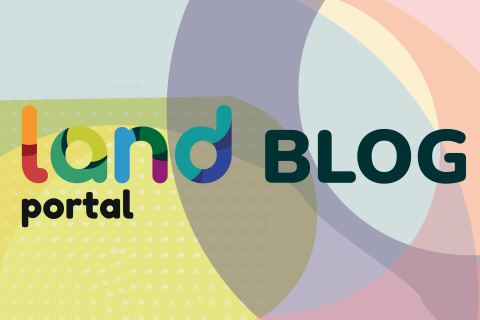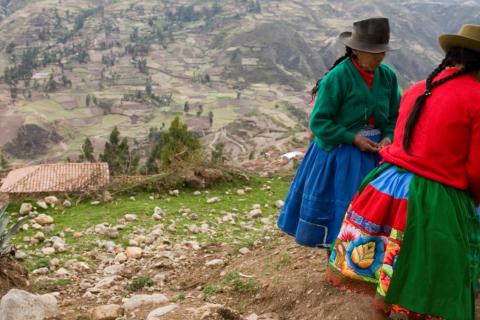As leaders from around the globe gather for the 2021 United Nations Climate Change Conference (COP 26), it is vital that they recognize two important facts. The first is that we cannot reach climate goals without protecting and sustainably managing the carbon-absorbing forests that cover a third of the Earth’s land surface.
The second is that we cannot protect forests without Indigenous Peoples. We know that forests do better when indigenous land rights are respected, with lower deforestation rates and carbon emissions. Currently, Indigenous Peoples and local communities manage at least 24% of the total above-ground carbon stored in the world’s tropical forests. Without them, we cannot win the race to save the planet.
The good news is that there has been a recent sea-change towards recognition of the role that Indigenous Peoples must play for a healthier planet and the achievement of many of the SDGs, including Goal 13 (climate action) and Goal 15 (life on land). The deeply intertwined and rapidly worsening climate and biodiversity crises have started to convince major philanthropists of the need to take action and put Indigenous Peoples and local communities in the driving seat.
Last month, nine grantmakers from prestigious foundations pledged USD 5 billion for conservation efforts that address threats to biodiversity and help curb climate change, and they committed to taking a new approach: working with Indigenous and local communities. One of the grantmakers, Amazon founder Jeff Bezos, suggested that past conservation efforts had failed precisely because they did not include local and Indigenous Peoples. Bezos said the nine foundations, his Bezos Earth Fund among them, would not “make the same mistakes,” and would support a new generation of programmes led by local communities.
We have also seen some positive moves by governments to recognize the central role of Indigenous Peoples for climate mitigation and nature conservation. It was announced last month that the World Heritage-listed Daintree tropical rainforest in northern Australia will officially be returned to its traditional owners, the Eastern Kuku Yalanji people, who will manage the area in partnership with regional government.
Canada has pledged CAD 340 million over the next five years to support Indigenous-led stewardship as part of its commitment to conserving 30% of the country’s lands and waters by 2030. In the US, land is being returned to Native American tribes to manage for conservation.
And the United Kingdom government – the host of COP 26 – has been vocal on the need for Indigenous rights. Zac Goldsmith, the UK’s Minister for Pacific and the Environment, said last month that while others have been “profoundly part of the problem,” Indigenous Peoples have been providing the solutions without “any meaningful support or even recognition.”
At the same time, Indigenous Peoples have increasingly received international recognition and been present at the table for major global events. This year saw the launch of the first major report by a UN agency that recognizes and rigorously documents that Indigenous Peoples are the best guardians of our forests. Among the report’s findings is the fact that, due to reduced deforestation rates, territories owned collectively by Indigenous Peoples have avoided up to 59.7 million metric tons (MtC) of carbon dioxide (CO2) emissions each year across Bolivia, Brazil, and Colombia – the equivalent of taking up to 12.6 million vehicles out of circulation for one year.
At the International Union for Conservation of Nature’s (IUCN) World Conservation Congress in September 2021, an umbrella group representing more than two million Indigenous Peoples across nine South American nations succeeded in having a resolution passed to protect 80% of the Amazon by 2025. Finally, the UN-backed Science Panel for the Amazon, comprising 200 experts and researchers from the region, has highlighted Indigenous rights as central for the protection of the Amazon.
But there is work yet to be done. Next week’s UN Climate Change Conference must recognize and support the more than 476 million Indigenous Peoples living in 90 countries and the vital role they play in protecting our natural resources and helping us to reach climate goals.
Governments must step up to the plate by committing funding to Indigenous Peoples’ territorial rights and forest management, especially in tropical countries. Multilateral trust funds, such as the Green Climate Fund (GCF) and the Global Environment Facility (GEF), must also increase their attention to, and funding for, Indigenous Peoples.
We need to strengthen the role that Indigenous and tribal Peoples play in forest governance and bolster communal territorial rights. We need to compensate Indigenous and tribal communities for the environmental services they provide. And we need to facilitate community forest management. Only then will we unlock the true potential of Indigenous Peoples to guide the planet towards a greener future.
This piece was originally posted on the IISD website.





